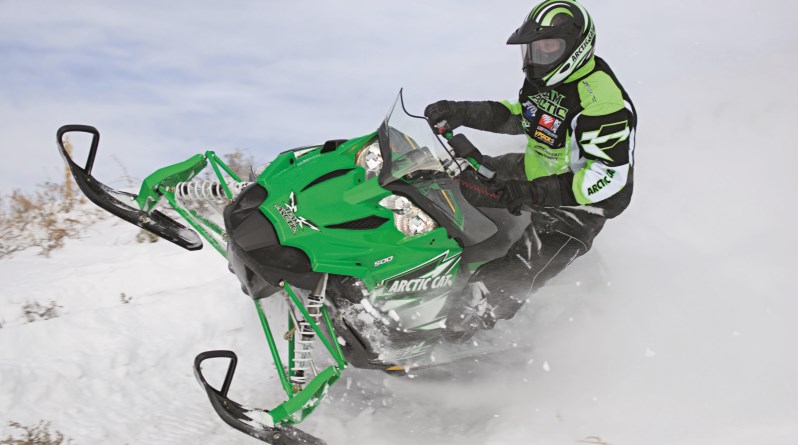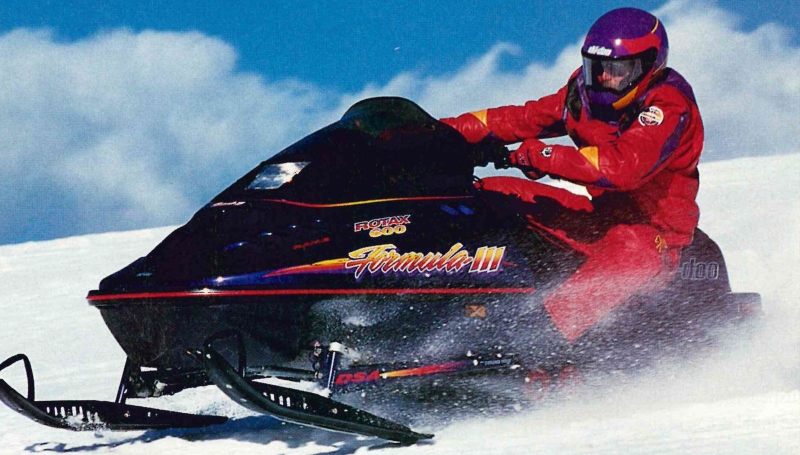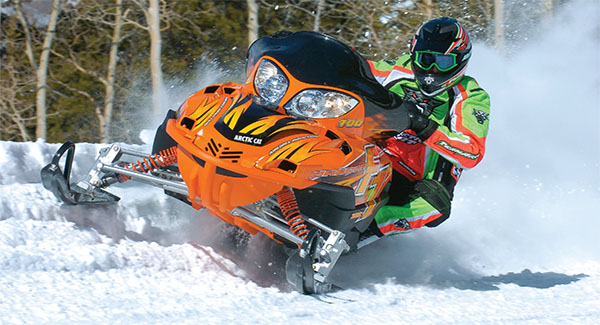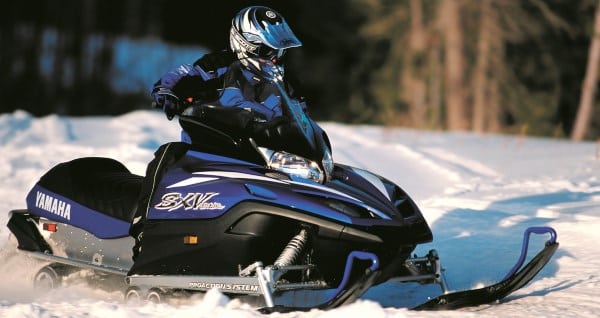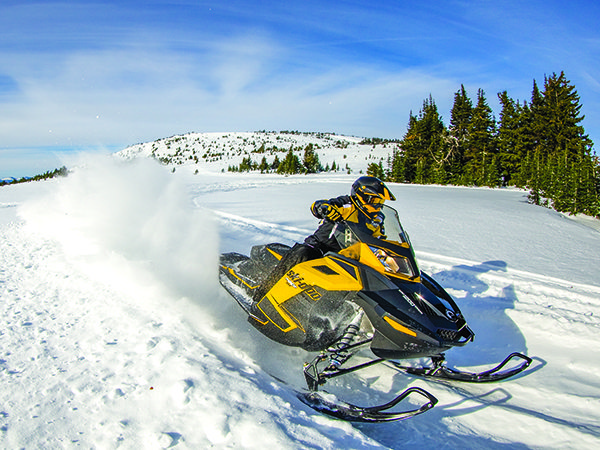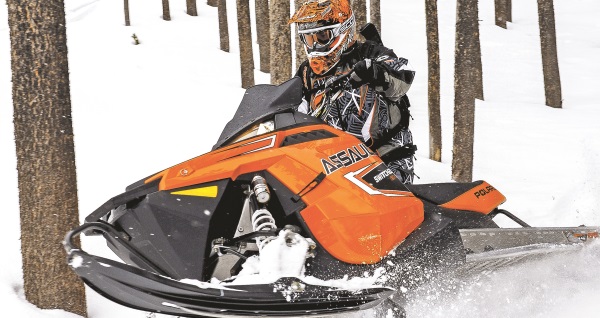
When it comes to snowmobiling, a desire for limited impact is something most folks agree on – as in, we all want to limit the degree to which we impact a tree, sign post, building, parked car or other fixed object!
Ski-Doo went after a different sort of target, though, when it designed its MX Z Sport 600 ACE snowmobile, and ended up with a machine that arguably has less impact on the environment as well as the ears, nose, back and shoulders – plus the wallet and toolbox – of its owners than any mass-produced snowmobile that’s been made in the past 40-plus years. Those looking for a comfortable, low-maintenance, low-powered machine would be hard-pressed to do any better than this.
The four-stroke 600 ACE engine was unveiled in February 2010 for use in model year 2011 Ski-Doo snowmobiles. From its start the 60 hp, fuel-injected inline twin was seen as a high-tech replacement for the 550-class, fan-cooled two-stroke twin that previously powered Ski-Doo’s entry-level models.
Compared to that fanner, the new 600 ACE promised better mileage (up to 29 mpg), a significantly quieter sound and the smoke-free appeal of a four-stroke. Its low-emission cred made it one of the first snowmobiles to pass the increasingly stringent Best Available Technology (BAT) requirement for entrance into Yellowstone National Park.
For the MX Z application, the engine was wedged into the REV-XP chassis platform, which offered a decent suspension setup, light steering, modern ergonomics and predictable handling.

At an idle, you can barely hear a 600 ACE engine run, and its uptake is quite docile. There’s a bit of a torquey feeling right off the bottom, but the power curve is subtle and smooth. Snowmobilers who treasure top-end power or spirited corner-to-corner acceleration best look elsewhere, but for those looking for a Prius for the trail and a stealthy approach when snaking through the woods, this is it.
Its only notable upgrades in its first four years was a moderately better seat and a primary clutch upgrade in 2013, but it was renewed in 2015 when it moved to the newer REV-XS chassis platform and added the intelligent Throttle Control (iTC) throttle-by-wire system. iTC allowed riders to choose between three driving modes (Sport, Standard and ECO) that altered the power curve, plus an available green “learning key” tether let owners control the top speed of a younger or newer rider. The iTC also ushered in a smaller throttle lever, and the sport’s lightest throttle pull.
All of this has made the MZ X Sport 600 ACE particularly appealing to a subset of the market that includes younger and older riders, folks looking for an easy-going second sled, newcomers and some (but certainly not all) women. It’s also been a particularly prolific sled for rental fleets.
In fact, the Yellowstone Adventures operation in West Yellowstone, Montana, dumped all of its fan-cooled rental sleds when the new ACE engines appeared and has never looked back.
“We’ve been using that engine since it came out and, from my perspective, it’s the most durable engine we’ve ever used,” said Brad Schmier of Yellowstone Adventures. He described the 550 fan-cooled, two-stroke twin the ACE competes against as “noisy and thirsty,” and said, “for the same basic power output, 600 ACE is much more economic to operate, and the longevity and reliability is far greater.”
Schmier said he’s has many 600 ACE-power sleds with more than 8,000 miles on the odometer that have only needed oil changes. The eDrive clutch used during the first couple of seasons needed occasional service, he said, but since Ski-Doo started using the eDrive2 clutch in 2013 it’s been foolproof.
The only repetitive problem Schmier has experienced has occurred when the engine has been run hot for a long period of time; he said the engine damage can be “catastrophic.” He attributed the cases he’s seen mainly to operator error – and one of the hazards of renting snowmobiles to people who may not know anything about engines, and when to stop using them if they are running hot!
Editor’s Note: Every Snow Goer issue includes in-depth sled reports and comparisons, aftermarket gear and accessories reviews, riding destination articles, do-it-yourself repair information, snowmobile technology and more. Subscribe to Snow Goer now to receive print and/or digital issues.

